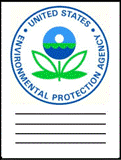United States Environmental Protection Agency

United States Environmental Protection Agency: Publications
Document Type
Article
Date of this Version
2002
Abstract
We present a synoptic assessment intended to maximize the benefits to wetland species biodiversity gained through Clean Water Act regulatory efforts within 225 sub-basins in Missouri, Iowa, Nebraska and Kansas (US Environmental Protection Agency, Region 7), USA. Our assessment provides a method for prioritizing sub-basins potentially critical for supporting wetland species biodiversity and may assist environmental managers and conservationists constrained by limited resources. We prioritize sub-basins based on the projected increase in the risk of wetland species extirpation across Region 7 that would be avoided by applying a unit of regulatory protection effort within a sub-basin. Because the projected increase in risk avoided per unit effort has not been directly measured, we represent this quantity with an index of indicators drawn from readily available data. A conceptual model incorporating landscape and anthropogenic factors guides index development via a series of simple benefit-cost equations. We rank and map the final index scores to show the relative priority among sub-basins for protection effort. High priority sub-basins appear to be concentrated along the major river systems within the region, where sensitive wetland species and intensive agriculture tend to coincide. Protection of wetland species biodiversity is an important, but not exclusive, attribute around which priorities should be set. Nevertheless, incorporation of our results into management strategies should allow managers to cast their local decisions in the context of regional scale maintenance of wetland species biodiversity, increasing ecological benefits for a given protection effort.


Comments
Published in Biodiversity and Conservation 11: 379–406, 2002.